#Valenti Angelo
Text


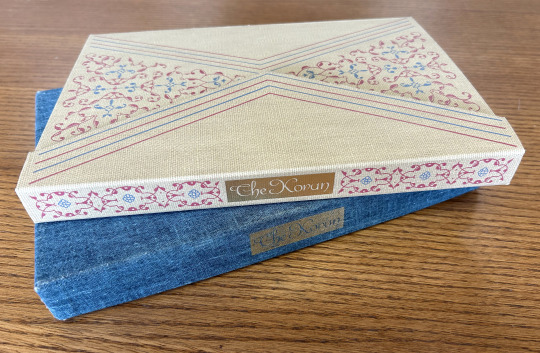

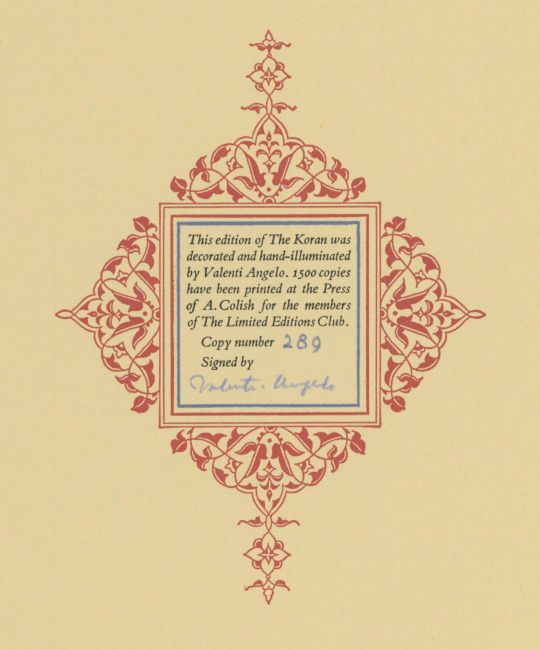

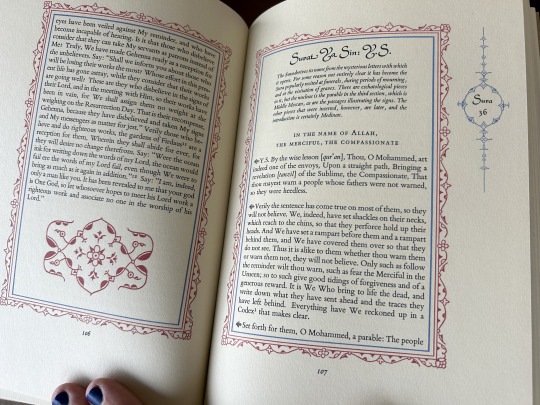
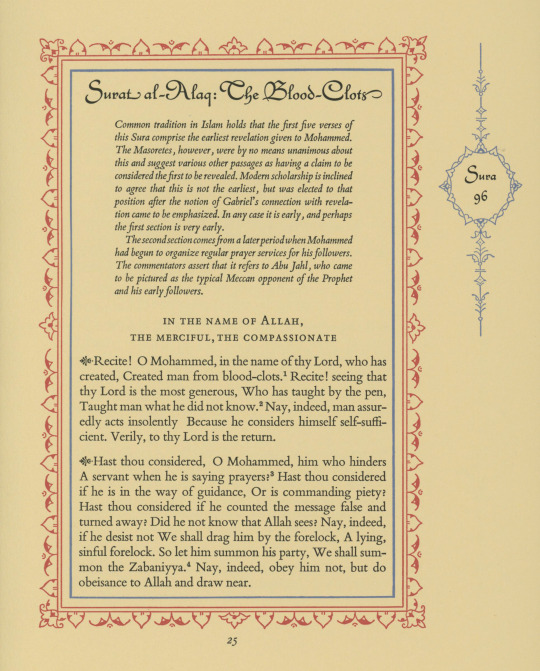

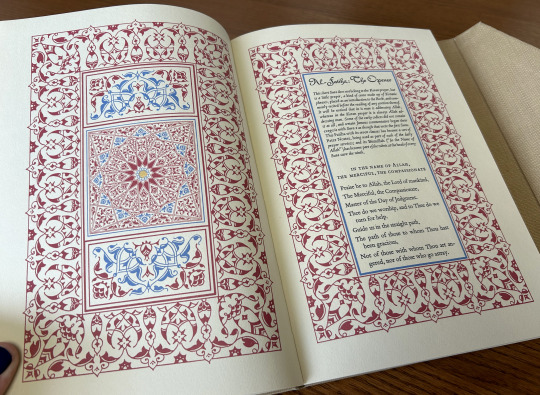
It’s Fine Press Friday!
This week, in honor of Ramadan, we’re taking a peek at a 1958 Limited Editions Club (LEC) publication of The Koran: Selected Suras from our collection. This modern, handsomely bound and illustrated collection of texts from the Qu‘ran was translated into English by Australian American scholar of Asian studies Arthur Jeffery (1892-1959), and features decorations in grayed blue and red ink from Italian American printmaker, illustrator, and author Valenti Angelo (1897-1982). The title page and the page opposite the opening sura were also hand-illuminated in gold by Angelo. The text, which features Bembo type and Civilité headings, is printed in black ink on custom made tan Arak paper from Curtis Paper Company, a paper mill in Newark, Delaware known for its manufacture of high-quality rag papers using 19th-century Fourdrinier machinery. The work was printed by Abraham Colish (1882–1963, otherwise known as A. Colish) and bound in cloth covered boards which were hand stamped with decorations in blue, red, and gold. It was released in an edition of 1500 copies, all of which were signed by the illustrator.
رمضان مبارك (Ramadan Mubarak)
Find more materials related to the Quran (including original manuscripts and alternate translations in Latin, French, and German) in UWM’s Special Collections
View more Fine Press Friday posts
View another Ramadan post
View more Bembo and Civilité posts
View more Valenti Angelo posts
View more A. Colish posts
View more Limited Editions Club posts
-- Ana, Special Collections Graduate Intern
#Ramadan#Fine Press Fridays#Quran#Koran#Limited Editions Club#Valenti Angelo#Arthur Jeffery#Bembo#Civilité#Curtis Paper Company#Press of A. Colish#Ramadan Mubarek#Ana
44 notes
·
View notes
Text
youtube
#How to Take Control and Find Joy in Life | Angelo Valenti | KAJ Masterclass LIVE The Power of Mindset: How to Take Control and Find Joy in L#Consulting psychologist#coach#author and speaker
Want to create live streams like this? Check out StreamYard: https://streamyard.com/pal/d/4859318626680832#Youtube
0 notes
Text

VALENTI MICHAEL ANGELO
Italian, 1897-1982
"Horses In The Night"
oil on canvas
signed lower right "VALENTI ANGELO"
Shannon’s
244 notes
·
View notes
Text





Book 353 & 354 & 355
The Book of the Thousand Nights and a Night: A Plain and Literal Translation of the Arabian Nights Entertainments (3-volume set)
Translated and Annotated by Richard F. Burton / illustrated by Valenti Angelo
The Heritage Press 1962
This three-volume set from The Heritage Press is a reprint of a six-volume set published by the Limited Editions Club in 1934, which was based on an edition of Burton’s complete translation published in 1885. While this is a handsome set and the 1,001 simple line drawings by Valenti Angelo have a certain kind of naive charm, I have to admit that I find Burton’s translation an incredibly clunky reading experience, although his notes are extensive and occasionally quite interesting.
#bookshelf#illustrated book#library#personal library#personal collection#books#book lover#bibliophile#booklr#the book of the thousand nights and a night#sir richard Francis burton#heritage press#folktales
9 notes
·
View notes
Photo

a magazine cover by Valenti Angelo (Italian/American, 1897-1982).
8 notes
·
View notes
Text
Tumblr è ufficialmente il mio blocco di appunti; questi sono i commenti che ho trovato sotto un video di frasi leopardiane, presumibilmente ad opera di un utente che ritiene di studiare e di pensare: una mente che mi diverte; una delle tante, sia lode a Dio.
"Il piacere (essendo decrescente nel corso dell'esistenza a seguito del progredire colpevole del sonno nella veglia) è sempre o passato (un ricordo) o futuro (una speranza), e non è mai presente."
"L'uomo è infelice perché incontentabile (non rinuncia a priori a partire dall'adolescenza alla cultura degli affetti carnali)."
INCONTENTABILE - spiegazione. L'uomo nasce felice (Genesi 2.8) e vive la felicità come normale non avendo la comparazione col mal di vita, ovvero la nevrosi di massa se non peggio, ragione per cui incautamente scivola nella cultura degli affetti carnali, anche perché in fase iniziale l'affettività stiracchia la felicità e l'individuo cade nell'errore che l'affettività sia il massimo del bene (benessere), ma ben presto la stessa risucchia la sonnolenza nella veglia e l'individuo:
1) Passa dalla Felicità
2) All'Infelicità successiva.
L'AFFETTIVITA' COSI' COME L'INNAMORAMENTO (Genesi 2.17) sono ingannevoli. L'innamoramento nello specifico è il dono del Diavolo (del Sentimento dell'Amicizia).
"Se sei felice non gridarlo troppo, la tristezza ha il sonno leggero". (Giacomo Leopardi)
Esiste la vera felicità in automatico promossa dalla veglia emersa nel lobo frontale del fanciullo in assenza di sonno (Genesi 2.8). Esiste poi la serenità di chi persegue l'amore indistinto, che la persona inconsapevole scambia per felicità (Giacomo Leopardi). Infine esiste la tristezza di chi insegue la felicità, che una volta persa perseguendo la cultura affettiva, è irrecuperabile.
- - - - -
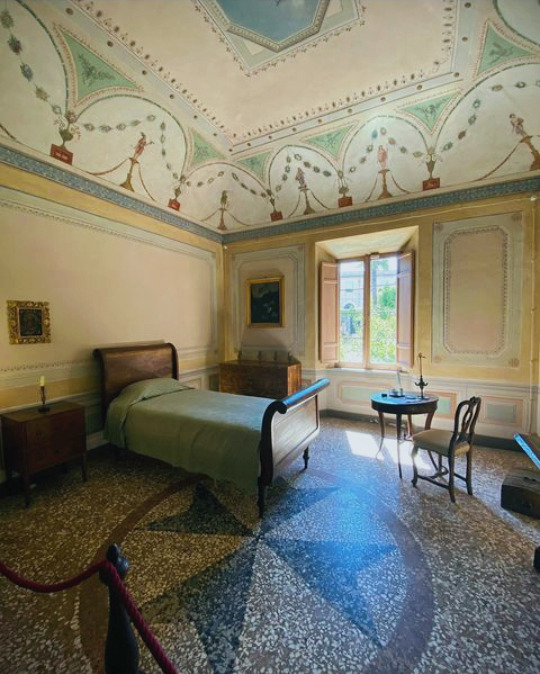

"Provò funestamente precoce la sensibilità della natura. Anticipò di quattro o cinque anni l'età dello sviluppo! Indi, com'egli mi confessò poi, tutti i mali fisici della sua vita. Vero fenomeno! La stessa natura, concedendo troppo o precorrendo il tempo, uccide o fa miseri". (Carlo Leopardi)
"...difficile stabilire di chi sia la responsabilità della rovina psicofisica del ragazzo prodigioso, perché questi non fa che prendere alla lettera e condurre alle estreme conseguenze ciò che il padre sostanzialmente vuole, la costruzione di sé come "testa", come spirito incorporeo e sostanza angelica: lo studio sarà la penitenza, gioiosamente accettata, con la quale il senso di colpa verrà rintuzzato, gli istinti precocemente attivi cacciati in profondo..."
(Dal mirabile, a tratti pruriginoso ma esatto studio di Elio Gioanola, di cui trovate uno stralcio qui ⬇)
L'amicissimo Antonio Ranieri descrive Leopardi come "di testa grande" e nomina spesso, con una sorta di invidiosa libido, il suo "cervello". Riferisce egli che il Leopardi - dovendosi spogliare per un bagno - vedendo l'espressione esterrefatta di lui davanti al suo torace contorto, dicesse con soave ironia: "Che vuoi, la natura...mi ha succhiato tutto il cervello". Questa frase è ripresa successivamente dal Ranieri in senso biologico-naturalistico, nell'affermazione che "la spugna del cervello" aveva succhiato in lui la quasi totalità di fluidi e risorse vitali, lasciandone troppo pochi per la sussistenza del corpo.

Frequentemente il Ranieri sente il bisogno di rappresentarsi l'amico come "un angelo", iper-razionale, asessuato. Insiste e giura sulla sua "verginità". Non gli concede la deviazione di un amore passionale, definendo come deliri "indegni di cotanto uomo" i soliloqui che a Giacomo strappava di bocca l'amore per Fanny Targioni-Tozzetti. Nella descrizione della sua morte, lo chiama "quella Grande Anima", senza implicazioni religiose, ma come iterato omaggio alla sua "incorporeità". Infatti, per lettera riferisce al padre di Giacomo che suo figlio se n'è dipartito con tutti i conforti religiosi, ma pubblicamente dichiara, a favore dei pochi, ma valenti intellettuali che stimavano Giacomo come ateo, che tale era rimasto fino all'ultimo passo.
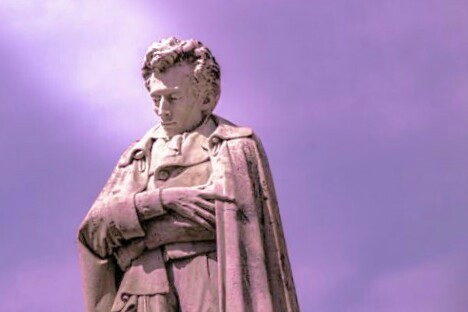
Probabilmente le donne che amò lo considerarono, come dichiarò secondo la propria personale esperienza la contessa Teresa Carniani-Malvezzi, unicamente nella sua essenza di poeta, di spirito, e non come uomo; non contemplavano la possibilità che lui amasse come tutti gli altri. "Signor conte, voi fate per celia"; "Signor conte, forse non vi sentite bene," disse ella vedendo che lui le s'inginocchiava innanzi, dichiarandole il proprio amore. Pensando a quel momento dico, parafrasando il Cardarelli:
"Inconsumata passò
tanta gioia".
#amore#diario#pensieri#scrittura#antonio ranieri#giacomo leopardi#anima#corpo#sessuofobia#dicotomia#manicheismo#il diavolo#l'acqua santa
4 notes
·
View notes
Text
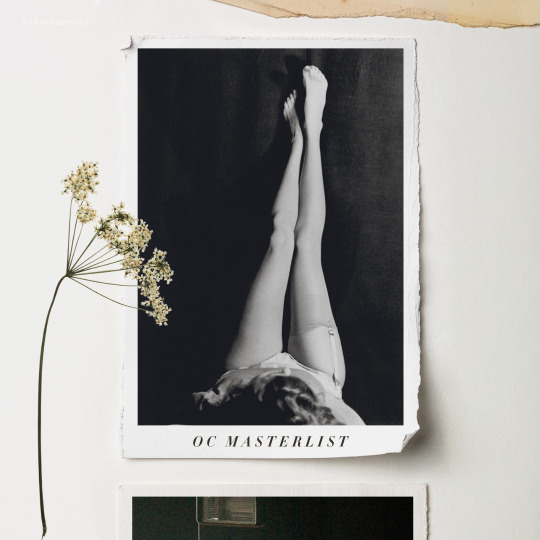
@shoshiwrites OC masterlist! We have a fairly sizable crew here now so I figured I'd do some introductions:)
Writing tag » Ao3 » photo credit

Jo Brandt — Original babe/OC. Correspondent with an Underwood portable and a ticket to England. Can be found along with her friends/roommates in my very long-running rewrite of When the War Came. Lives life behind the notepad.
Frankie Valenti — Switchboard operator, Jo's BFF since they were teenagers. Snarky, cares deeply.
Evie La Rosa — Frankie’s friend/former coworker. Works in shipyard administration and engaged to BF Angelo. Has food at home.
Clara Fernandes — Former gas station attendant who Evie helps get a job at the Navy Yard. Total sweetheart (except when she’s plotting something).
Vicky Grigorian — Army nurse, ETO. Works hard, parties* hard. *Goes for coffee after the movies.
Lena Rosen — Welder at the Navy Yard with Clara. Mom runs a boardinghouse and she helps with the books. Sarcastic? Her? Never.
Anita Morgan — Works next to Frankie and thinks she’s real swell👀
Kay Palmer — Fellow correspondent Jo meets in London. Big personality, even bigger heart.
Toni Murray — Photographer Jo meets in Austria.

Francisca de Ruyter — Seamstress in Eindhoven, learning to take leaps. Found in zonnestraal.
Faye Jordan — WAC back stateside. Found in In Bloom.
Ruby Rosinsky — Working in her hometown, restless. Found in February.
Christina Church — Graduate student with the MFAA. Found in sidera.
Mickey Franco — PTO nurse returning home to the West Coast. From Tashlikh (WIP).
#am i going overboard with this? yes#do i care? no#shoshi writes#some stuff still isnt showing in tags rn but://#like the clara/skinny thing isnt showing up:((#meet my babes#we know more about some than others but nevertheless they are all my babes#this should have a readmore but.
16 notes
·
View notes
Text

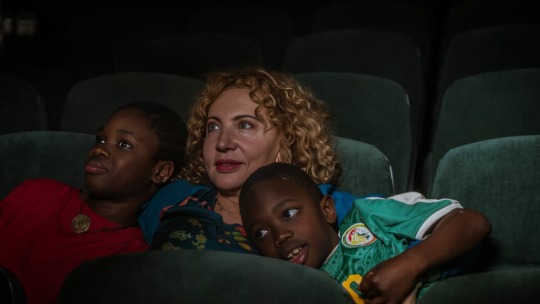

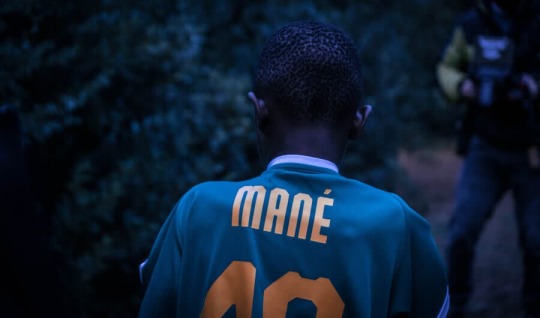

In sala dall’11 settembre 2023 “OLTRE IL CONFINE”
di Alessandro Valenti, distribuito da 102 Distribution
Esce in sala dall’11 settembre 2023, distribuito da 102 Distribution, ‘Oltre il confine‘, lungometraggio scritto e diretto da Alessandro Valenti, interpretato da Iaia Forte, Mama Fatou Mbaye, Fallou Mbaye e Nicola Rignanese. Il progetto nasce da una coproduzione Italia-Francia prodotto da Angelo Laudisa e Alessandro Valenti per Scirocco Films con Rai Cinema, in coproduzione con Rosebud Entertainment Pictures in associazione con Arte Cofinova.
0 notes
Text
Quesito
Caro Padre Angelo,
leggo da un po’ le sue risposte ai quesiti che le vengono posti da diversi fedeli e mi sono deciso a chiederle di chiarire alcuni miei dubbi riguardo alla scelta che mi trovo a fare per il mio futuro. Sono un diciannovenne studente del primo anno di ingegneria, ma non è questo ciò che voglio fare: ho maturato negli anni un sempre crescente desiderio di entrare in accademia militare per laurearmi lì, diventare ufficiale e servire nell’esercito. Ma questo mio fortissimo desiderio si è scontrato con alcuni ostacoli che mi fanno molto pensare e che mi hanno anche portato a non scegliere di intraprendere tale strada subito dopo il liceo, ma di aspettare un anno come sto effettivamente facendo. Questi ostacoli sono: da un lato, il dispiacere dei miei genitori nel sentirsi dire da me che la mia intenzione è di essere un militare; dall’altro, la conciliabilità di alcuni aspetti di questa mia scelta con la mia fede. Ed è qui che chiedo il suo aiuto.
Da militare mi potrei ovviamente trovare in situazioni in cui le mie azioni porterebbero a togliere la vita a degli uomini, per non dire che potrei essere proprio io a trovarmi ad uccidere. Quando tutto ciò vorrò dirlo in confessionale, come potrò ottenere l’assoluzione, se per essa è necessario, oltre che il pentimento, il sincero desiderio di non voler commettere più i peccati confessati, mentre io, facendolo di lavoro, sarò consapevole che potrei dover tornare a uccidere o causare morte? In più, lo stato che servirei, è uno stato, come sappiamo, laico, che negli ultimi decenni ha già portato avanti legislazioni e iniziative in contrasto con la fede cristiana (penso all’aborto, ma non solo) e che in futuro potrebbe promuoverne altre. Per quanto sia forte il mio rispetto per le istituzioni in quanto tali e il desiderio di servizio verso le altre persone e la mia patria (sentimenti, questi, che credo siano in continuità col cattolicesimo), farei molta fatica a essere soldato, e quindi rappresentante e servitore, di uno stato che è nemico della mia fede. Perciò, questa seconda domanda è molto diretta: posso servire e amare Dio e la Chiesa, come so che devo e voglio fare sempre seguendo la mia fede, e contemporaneamente servire da militare questo stato?
Mi scuso per la forse eccessiva lunghezza della mia lettera. Credo però che ogni parola sia stata necessaria per esporle il più nitidamente e sinceramente possibile tutti i dubbi che mi tormentano. Spero di essere stato chiaro. La ringrazio in anticipo per la sua risposta e la ricordo nella preghiera.
Cordiali saluti.
Alberto
Risposta del sacerdote
Caro Alberto,
1. preciso subito che non entro nel merito se per te sia più conveniente fare l’ingegnere o entrare nella vita militare.
Mi limito solo ad osservare che è cosa lecita e buona entrare nella vita militare.
Si tratta infatti di un servizio reso alla società per poterla difendere.
2. Certo, se non ci fosse stato il peccato originale non ci sarebbe stato bisogno della vita militare.
Ma dopo il peccato originale, poiché gli uomini sono inclinati al male e di fatto talvolta sono cattivi, è necessario che la società si difenda.
Come dicevano i santi padri, che sono gli antichi autori cristiani, il servizio militare è una “dolorosa necessità”.
3. Il santo Papa Paolo VI quando parlo all’ONU il 4 ottobre 1965 disse: “Finché l’uomo rimane l’essere debole e volubile e anche cattivo, quale spesso si dimostra, le armi della difesa saranno necessarie, purtroppo; ma, voi, coraggiosi e valenti quali siete, state studiando come garantire la sicurezza della vita internazionale senza ricorso alle armi”.
Purtroppo i rappresentanti delle nazioni all’ONU non hanno studiato come garantire la sicurezza internazionale senza ricorrere alle armi o comunque, anche qualora l’avessero studiato, non ne abbiamo visto gli effetti.
4. L’obiettivo della vita militare non è quello di uccidere le persone, ma piuttosto la difesa dall’omicidio e da ogni altr
a realtà sovversiva.
Il Concilio Vaticano II ha usato espressioni molto belle per i militari dicendo: “Coloro poi che al servizio della patria esercitano la loro professione nelle file dell’esercito, si considerino anch’essi come ministri della sicurezza e della libertàdei loro popoli e, se rettamente adempiono il loro dovere, concorrono anch’essi veramente alla stabilità della pace” (Gaudium et spes, 79).
5. Giovanni Paolo II parlando agli allievi della scuola alpina di Aosta ricordò loro: “La prima vostra responsabilità si chiama impegno di pace.
La condizione militare ha il suo fondamento morale nell’esigenza di difendere i beni spirituali e materiali della comunità nazionale, della Patria… e che rimane il fatto che c’è bisogno di garantirsi da quelle tentazioni di aggressione, di ingiustizia e di violenza che spesso allettano ed alterano lo spirito umano.
Esiste infatti una situazione di peccato nell’umanità, che si annida nel cuore delle persone e tenta di incidersi a fondo nei vari strati della società.
In questo contesto la difesa è prudenza, è diritto, è dovere che impegna gli uomini ad una continua vigilanza, interiore ed esterna, per prevenire lo scatenarsi della guerra... Siate dunque convinti, cari Alpini, di svolgere un’opera di pace” (7.9.1987).
6. Se poi succede che talvolta questa difesa debba usare le armi, l’obiettivo non è quello di uccidere le persone ma di dissuaderle.
E se questa aggressione fosse continuata e violenta allora “la legittima difesa può essere non soltanto un diritto, ma un grave dovere, per chi è responsabile della vita di altri, del bene comune della famiglia o della comunità civile” (Catechismo della Chiesa Cattolica 2265).
7. Ecco come San Tommaso giustifica sotto un profilo teologico l’eventuale uccisione dell’aggressore: “Niente impedisce che un atto abbia due effetti, di cui l’uno intenzionale e l’altro involontario. Gli atti morali però ricevono la specie da ciò che è intenzionale, non da ciò che è involontario, essendo questo un elemento accidentale.
Perciò dalla difesa personale possono seguire due effetti, il primo dei quali è la conservazione della propria vita, mentre l’altro è l’uccisione dell’attentatore.
Orbene, questa azione non può considerarsi illecita, per il fatto che con essa s’intende conservare la propria vita: poiché è naturale per ogni essere conservare per quanto è possibile la propria esistenza.
Tuttavia un atto che parte da una buona intenzione può diventare illecito se è sproporzionato al fine. Se quindi uno nel difendere la propria vita usa una maggiore violenza del necessario, il suo atto è illecito. Se invece reagisce con moderazione, allora la sua difesa è lecita: infatti il diritto stabilisce che “È lecito respingere la violenza con la violenza con la moderazione di una difesa non colpevole” (vim vi repellere licet cum moderamine inculpatae tutelae). Non è quindi necessario per la salvezza dell’anima che uno rinunzi alla legittima difesa per evitare l’uccisione di altri: poiché un uomo è più tenuto a provvedere alla propria vita che alla vita altrui” (Somma teologica, II-II, 64, 7).
Pertanto, qualora optassi per la vita militare, vai avanti serenamente. Puoi diventare santo anche percorrendo questa strada.
Ti benedico, ti auguro ogni bene e ti ricordo nella preghiera.
Padre Angelo
0 notes
Text
Francesco Pira è il nuovo Presidente del Lions Club Valle dei Templi di Agrigento

Il docente universitario e giornalista Francesco Pira è il nuovo Presidente del Lions Club Valle dei Templi di Agrigento. Lo scorso primo luglio c’è stato il passaggio della Campana tra l’entrante Pira e l’uscente Prof.ssa Maria Assunta Iacona che ha terminato il suo incarico annuale.
Nel corso della stessa celebrazione è stato inaugurato anche il nuovo Anno Sociale 2022/2023 del Lions Club Agrigento Valle dei Templi.
Sono stati proiettati due video, uno con il quale sono state ricordate le Attività di Service svolte nell'Anno trascorso dal Club, guidato dalla Prof.ssa Iacona - e l'altro di presentazione del Prof. Pira e degli obiettivi lionistici dell'Anno Sociale 2022/2023.
Alla manifestazione hanno partecipato e sono intervenuti Officer Lions di Club, Zona e Distrettuali, il Presidente di Zona uscente, dottor Enrico Fiorella, la nuova Presidente di Zona, dottoressa Mariella Antinoro, ed il Past Governatore, dottor Angelo Collura,
che si sono complimentati per le attività di servizio svolte dal Club, certi che anche in questo nuovo anno i Soci saranno vicini e presenti nella loro Comunità.
Tanti i messaggi che sono arrivati ai Presidenti Iacona e Pira, dal Presidente del Consiglio dei Governatori, avvocato Mariella Sciammetta, dal Past Presidente del Multidistretto, avvocato Salvatore Giacona, dal Governatore uscente, dottor Francesco Cirillo, al nuovo Governatore, dottor, Maurizio Gibilaro, al I° e II° Vice Governatore, dottor Paolo Valenti e Mario Palmisciano.
Alla manifestazione erano presenti e sono intervenuti anche il Ministro Regionale dell’OFS (Ordine Francescano Secolare) di Sicilia Dott. Carmelo Vitello ed il Guardiano del Convento S.Antonio di Favara dei Frati Minori, Fra Giuseppe Di Fatta.
Il Presidente Francesco Pira ha presentato ai Soci lo Staff che lo collaborerà nel corso di quest’anno: avvocato Gaetano Salemi - Segretario, professoressa Antonia Russello - Tesoriere e Signora Sonia Siracusa - Cerimoniere.
Particolarmente toccante il momento in cui si è esibito Fra Giuseppe Di Fatta con un canto dedicato a San Francesco, un momento di grande spiritualità.
Il professor Pira ha annunciato iniziative, nel corso del nuovo anno sociale che impegneranno il club in momenti di confronto su disinformazione, sostenibilità, adolescenti e bambini e nuove tecnologie, nel segno di quanto è stato fatto dalla Presidente Iacona.
Read the full article
0 notes
Photo

Cat - Valenti Angelo , n/d.
Italian-American, 1897-1982
Linocut , 9 3/4 x 7 3/4 in. 23.2 x 19.7 cm.
219 notes
·
View notes
Photo




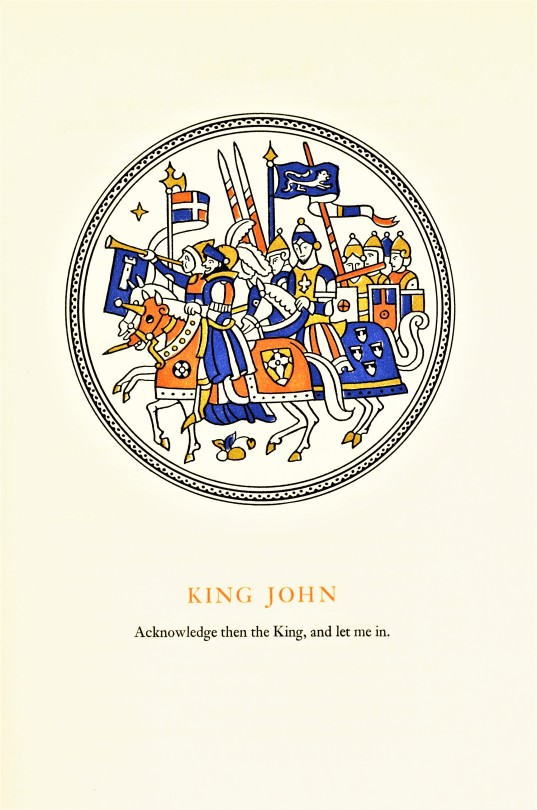
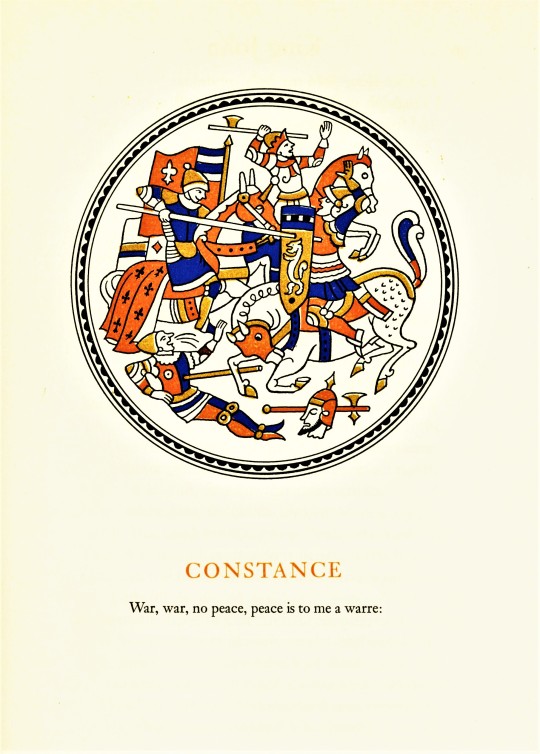

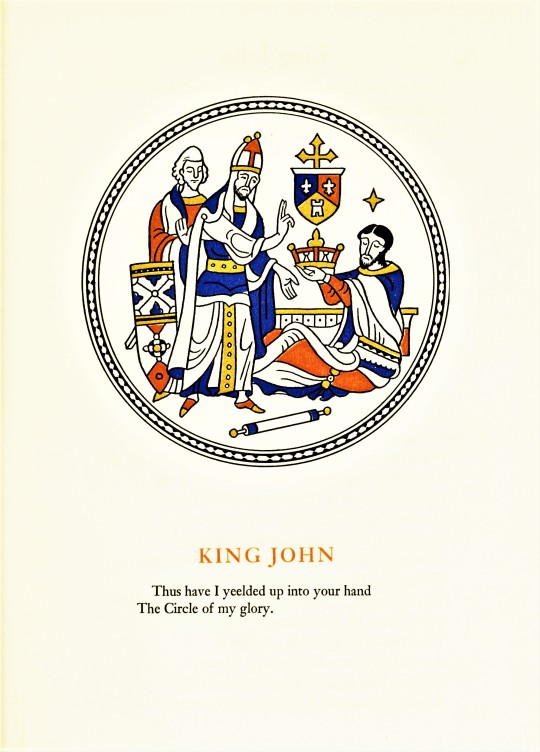
Shakespeare Weekend!
William Shakespeare’s historical play, King John, is Volume 16 of the thirty-seven volume The Comedies Histories & Tragedies of William Shakespeare, published by the Limited Editions Club (LEC) from 1939-1940. King John was adapted by Shakespeare before 1598 from his earlier work, The Troublesome Raigne of King John. King John was first printed in the folio of 1623.
Italian-American printmaker and book illustrator and designer, Valenti Angelo (1897-1982) illustrated this edition of King John. Angelo decorated and illustrated around 250 books in a span of thirty four years, working first at the Grabhorn Press in San Francisco from 1926 to 1932, producing thirty five books for them. He then moved to New York City and fell on hard times during the great depression until he found a place for himself working at the Limited Editions Club in New York City. In 1937 Angelo also began illustrating his own children's books with the mentorship of the American children's book editor, May Massee at Viking Press.
For King John Angelo produced a series of drawings that were reproduced in three colors and gold. The volumes in the set were printed in an edition of 1950 copies at the Press of A. Colish, and each was illustrated by a different artist, but the unifying factor is that all volumes were designed by famed book and type designer Bruce Rogers and edited by the British theatre professional and Shakespeare specialist Herbert Farjeon. Our copy is number 1113, the number for long-standing LEC member Austin Fredric Lutter of Waukesha, Wisconsin.
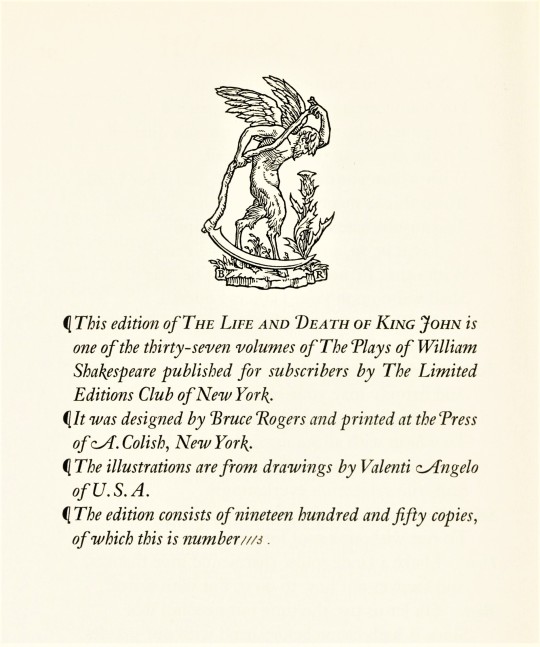
View more Limited Edition Club posts.
View more Shakespeare Weekend posts.
-Teddy, Special Collections Graduate Intern
#Shakespeare Weekend#William Shakespeare#Limited Editions Club#King John#King John play#Shakespeare#Death of King John#Bruce Rogers#Press of A. Colish#Valenti Angelo#Herbert Farjeon#may massee#Grabhorn Press#Viking Press#Teddy
103 notes
·
View notes
Photo
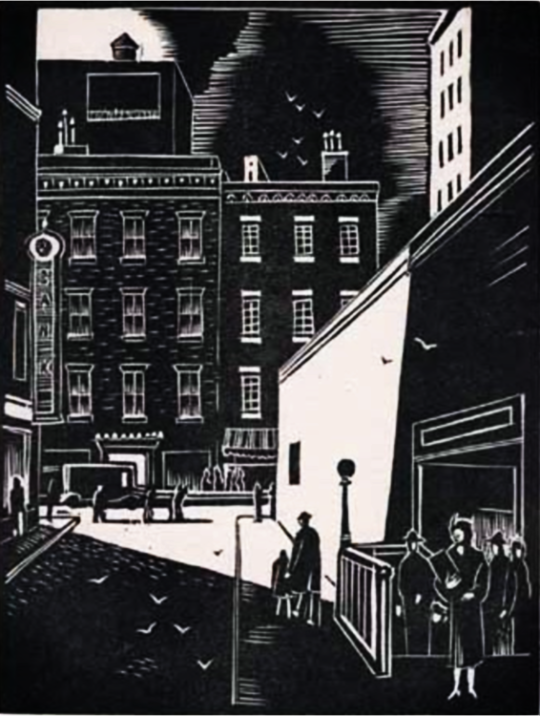
Valenti Angelo Woodblock Print ‘Subway Entrance. New York, NY’ 1969.
(Valenti Angelo (1897-1982) was an Italian-born U.S. artist active as an illustrator. He illustrated about 250 books. He was also a writer, winning the Newbery for Nino in 1939. As a printmaker his favourite medium was linoleum. Some of Angelo’s illustrations are the epitome of midcentury modern style, with simple lines, flat shapes, and stylised figures, but he had a long career with plenty of work both before and after the midcentury, so not one style defines him.)
(Source: nydamprintsblackandwhite.blogspot.com)
#art#woodcut#holzschnitt#cityscape print#vintage print#20th century print#valenti angelo#printmaking#woodblock & print#woodblock print#wood engraving#wood gravure#artwork#NYC#1969#mid-century modernism#italian-american artist#italian-american printmaker
48 notes
·
View notes
Photo

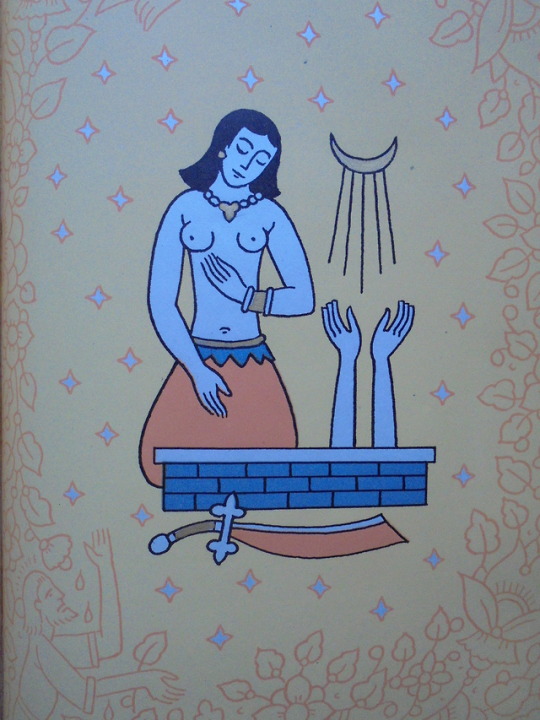


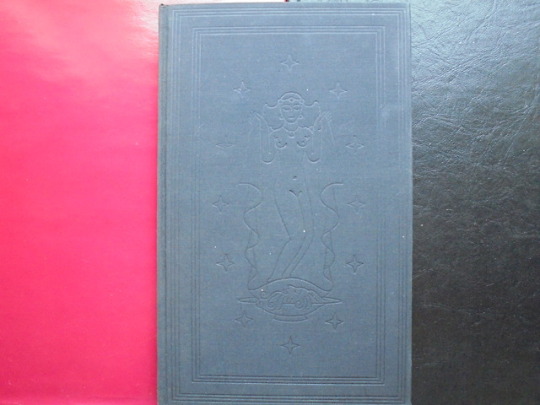
Salome : A Tragedy in One Act by Oscar Wilde
#theather#plays#vintage books#oscar wilde#salome#1945#valenti angelo#illustrations#art#drama#john the baptist
3 notes
·
View notes
Photo
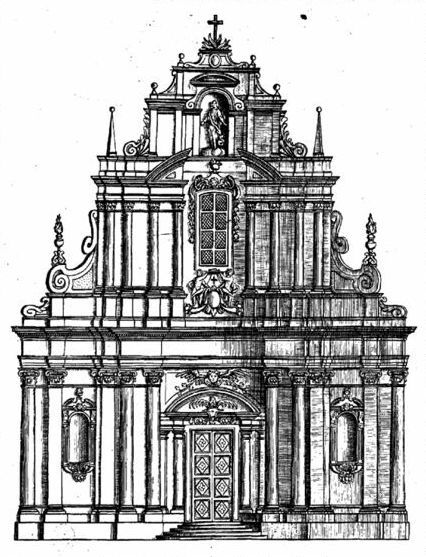





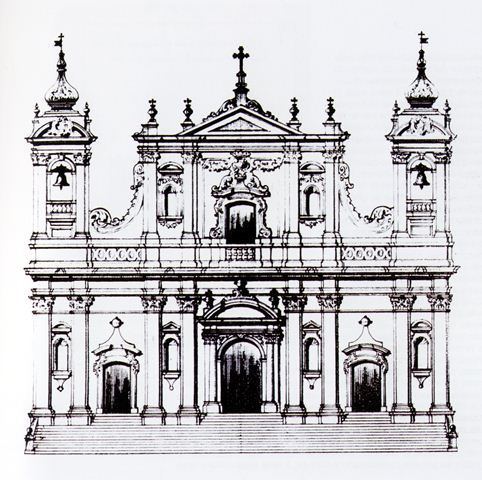



DISEGNI DELLE OPERE BAROCCHE - Messina Chiesa dell’Annunziata dei Teatini di Gagliardi - Palermo: i Quattro Canti - Palermo - Altare di San Fausto di Giacomo Amato - Disegni di Paolo Labisi dell’Annunciata di Ispica - Catania Scenografia di Gagliardi - Palermo Riproduzioni delle opere di Serpotta - Trapani disegno per l’apparato in argento e corallo rappresentante il Monte di Pietà di Palermo.
Benché il Barocco Siciliano abbia come data d’inizio il 1693, data che coincide con il terribile terremoto che distrusse più di cinquanta citta e trecento villaggi nella Sicilia orientale, la sua origine è ovviamente antecedente al terremoto. Nei primi anni del 1600 l’architetto Guarino Guarini aveva iniziato a costruire a Messina nuovi edifici che rispecchiavano lo stile barocco romano ed europeo. Introdusse in particolare la crescita verticale delle chiese e la presenza di una cupola ma non colpì molto i conterranei che sembravano piuttosto scettici sul nuovo stile. Guarini realizzò molte opere a Messina e divenne un punto di riferimento per il gesuita Angelo Italia che era già stato sedotto a Roma dal Borromini, Rinaldi e Della Porta e che fu il riferimento di molti architetti locali. Quando quindi arrivò il momento di ricostruire già circolavano nell’isola le idee del nuovo stile e vi erano una folta schiera di artisti che poteva realizzarli. Più di una ventina di valenti architetti siciliani e non, furono incaricati dalla nobiltà siciliana e dalla potente chiesa locale (che godeva dei lasciti e delle donazioni dei nobili) di ricostruire le città distrutte e di riammodernare quelle che il terremoto non aveva toccato ma che ormai sembravano troppo vecchie ed anacronistiche in confronto al nuovo stile della ricostruzione. Gli architetti potevano inoltre contare su una trentina di pittori e scultori e sul supporto di principi illuminati che vollero ricostruire secondo le forme e la logica della ragione. Ai vari Paolo e Giacomo Amato si unirono Giovanni Vermexio, il Vaccarini a Catania, Gagliardi, Sinatra e Labisi a Noto, Ragusa e Scicli. Il frutto della loro opera fu un Barocco Siciliano colorato, esuberante e scenografico che vestì le ville, i palazzi e le chiese dell’aristocrazia siciliana con una policromia e una ricchezza di materiale, con le forme curve e verticali che ancor oggi contraddistinguono le città ed i paesi siciliani.
Although the Sicilian Baroque dates back to 1693, a date that coincides with the terrible earthquake that destroyed more than fifty cities and three hundred villages in eastern Sicily, its origin obviously pre-dates the earthquake. In the early 1600s, the architect Guarino Guarini had begun to build new buildings in Messina that reflected the Roman and European Baroque style. He introduced in particular the vertical growth of the churches and the presence of a dome but did not impress the countrymen who seemed rather skeptical about the new style. Guarini created many works in Messina and became a point of reference for the Jesuit Angelo Italia who had already been seduced in Rome by Borromini, Rinaldi and Della Porta and who was the reference point for many local architects. So when the time came to rebuild, the ideas of the new style were already circulating on the island and there were a large group of artists who could create them. More than twenty talented Sicilian and non-Sicilian architects were commissioned by the Sicilian nobility and by the powerful local church (which enjoyed the legacies and donations of the nobles) to rebuild the destroyed cities and modernize those that the earthquake had not touched but which by now they seemed too old and anachronistic compared to the new style of reconstruction. The architects could also count on about thirty painters and sculptors and on the support of enlightened principles that they wanted to reconstruct according to the forms and logic of reason. The various Paolo and Giacomo Amato were joined by Giovanni Vermexio, Vaccarini in Catania, Gagliardi, Sinatra and Labisi in Noto, Ragusa and Scicli. The result of their work was a colorful, exuberant and scenographic Sicilian Baroque that dressed the villas, palaces and churches of the Sicilian aristocracy with a polychromy and a wealth of material, with the curved and vertical shapes that still today distinguish the cities and the Sicilian towns.
26 notes
·
View notes
Text
My Thoughts During The Penumbra Podcast
Season 2:
2.01
- hmmm a train?
- wow that got personal quick
- Juno why
- I think you need a nap too Juno
- Aww it’s a cat
- Fake cat?
- yay Juno
2.02
- Please do bring cats back to the office Juno
- oh Rita :(
- OH NO THE CATS
- oh Juno
- ah this person
- Juno may get a new eye, huh
2.03
- ooo audio distortion
- oh no
- nice
2.04
- the name of this one scares me
- Mick?
- And he got hired somewhere
2.05
- Mick really
- they’re probably gonna get framed for murder some how
- my mind went, ay yes the final r “rmurder”
- good job Juno
- watch Mick turn out to be the big bad by the end of the series
2.06
- we get to hear from another knight, yay
- awwwwwwww
- snek?
- i love Sir Damien already
2.07
- okay so Sir Damien is a bi disaster as well
- the snake/lizard noises make everything less serious to me
- “And I yours” “W-what”
- oh no Rilla
2.08
- Thank you Rita
- “A place where fun calls home, tm”
- RITA I LOVE YOU SO MUCH
2.09
- love how she got more suspicious after they figured out it was her
- hey Rita maybe don’t tell Juno’s passwords to everyone
- is it stylistic noise or is it my bad headphones doing that
- love this
- JUNO
- :’(
2.10
- Marc!
- “Still, that was reckless. Do you wanna set it on fire?”
- thats probably not good
- golf
- oh no Arum
2.11
- “Saying no to habits like sleep”
- “stalling for this next part cause i’m gonna hate it”
- fun
2.12
- my first thought for help was Nureyev, but then I realized that’s sadly probably not gonna happen, so Sasha or Mick maybe???
- ahhh Alessandra Strong
2.13
- i love and hate Sir Damien at the same time
- i love Sir Caroline not signing her name how the queen wants
2.14
- Zach Valenti????
- the amount of happiness that hearing Zach’s voice give me
2.15
- NUREYEV!!!!!!!??
- :((((((
- sad
- oh no
- i just realized that Lauren Shippen is also here too
- i love how the Thea spectrum can just do that
2.16
- what’s happening?
- I KNEW O’FLAHERTY WASNT TO BE TRUSTED
The Rita Minute 3: Happy Birthday Mista Steel!
- RITA OH NO
- not Kahn
- okay good
- NUREYEV!!!!
- he got him flowers, AHHHHH
- dahlias and roses
- the ending was very sweet
- also i miss Nureyev so much and i can’t
2.17
- :((((((((((((((
- “you appear to be punching your own face”
- hmmmmm
- cool Buddy
- “You’ll be able playing the sad drunk” not that hard for Juno to be honest
- Vespa
2.18
- “I’ve been lightly stabbed” YESSS???
- yay
- Juno is crying :’)
2.19
- hm
- hmm, part 2
- “It’s just a rock” i mean you just heard the forest sing it might be more then a rock
- oh no
2.20
- “So it’s your mom?”
- “Found it” “What?”
- love that they keep spraying the solution at each other
- :’((((((((((((((((((((((
- HEY SIR CAROLINE, NO!
- I would like to take the opportunity to say how much I LOVE the music in this podcast
2.21
- what do you mean past? this scares me
- oh yeah Juno needs to get rid of the eye
- oh no
2.22
- :(
2.23
- i feel like i’ve heard this voice, i mean, that means nothing when there are the same voice actors for many of the characters, but still
- oh that’s why
2.24
- yay Marc, Talfryn, and Dampierre
- Sir Angleo and Sir Damien?
- i just want them to get along because i love all of them
- y’all she saved herself shut up
- wut
- sport
- “Talfryn. The other one”
- “Where is your demon horse?”
2.25
- i really don’t want either of them to die
- oh no
- yay?
- awww sibling bonding always makes me almost cry i love it
2.26
- no
- wut
- what’s happening
- hmmmmm
2.27
- DONT HURT THE BUNNY
- RIIIITTTTAAAAA
- RRRRRIIIIIITTTTTTAAAAA!!!!!
- huh
2.28
- Arum’s speech :(
- really?
2.29
- i mean i already knew it but, yeah Rilla?????
- Oh no
- hmmmmm
2.30
- Rita i love you thank you
- Mick!!!!
- oh no Juno
- Mick...
- I really didn’t want Juno to be right, but welp
2.31
- hmmmmmm m
- HHHHHMMMMMM
- oh no
2.32
- and then the boys explored the spooky maze
- aw nice
- i love the music so much
2.33
- good job Tal
- oh no
- oh no they’re all talking now ahhhhh
- Damien no
- don’t just leave it there!!!!
Holiday Special: Second Citadel — The Frozen King of Flame
- Snow!
- i love Sir Angelo so much
- i love that they took everyone to her house
- i love this
2.34
- oh no Juno
- oh no Juno
- Rita
- no no no ono on onnononononoonononoono
- nononononoonononononononononoo
- nonononoononononono
- nononononoonon
- i hate the static for her name :((((, taz vibes
- i really don’t like hearing O’Flaherty
- :(((((((((((((
- i love Rita so much and i’m so scared for what’s gonna happen
2.35
- i’m big scared for this episode
- i love Rita so much
- really hope this is a trap
- YAH
- i forgot Dark Matters existed
- HE IS GONNA WORK FOR THEM, AND HE IS TAKING RITA
- cop -> PI -> politics -> crime, wow Juno
- and they want Rita more then Juno, heheheheheh
- Jet!
- I’m gonna cry this is so sweet
- oh a car you say? Ruby 7 you say? Nureyev maybe??????
- YEEESSSSSSHESBACKIMSOHAPPY
- IT HAS BEEN A WHILE HUH
- it’s kinda funny how much just pure joy the end of this episode gave me, i was just real happy for a solid hour and a half
2.36
- i’m big scared for these
- the walls will definitely break at one point
2.37
- Marc, please don’t kill him
- Arum don’t kill Marc either!
2.38
- love that they’re bickering about the word “hour”
2.39
- shot it the eyes, Damien?
- DAMIEN!!!!!
- :(
- “bone cage”
2.40
- PANIC
2.41
- last one
- oh no
- ahhh
- okay?
- Yay everyone is back together, i love when these end with a bunch of people all together
- they finally get to talk about it
- i forgot she had a dog!
-awwwwww
14 notes
·
View notes